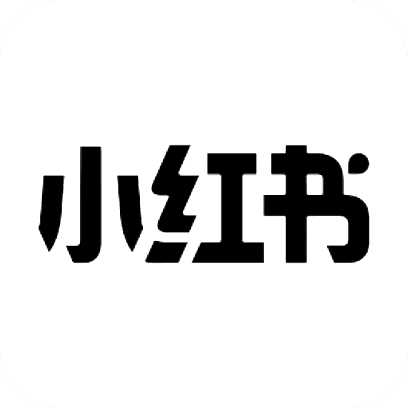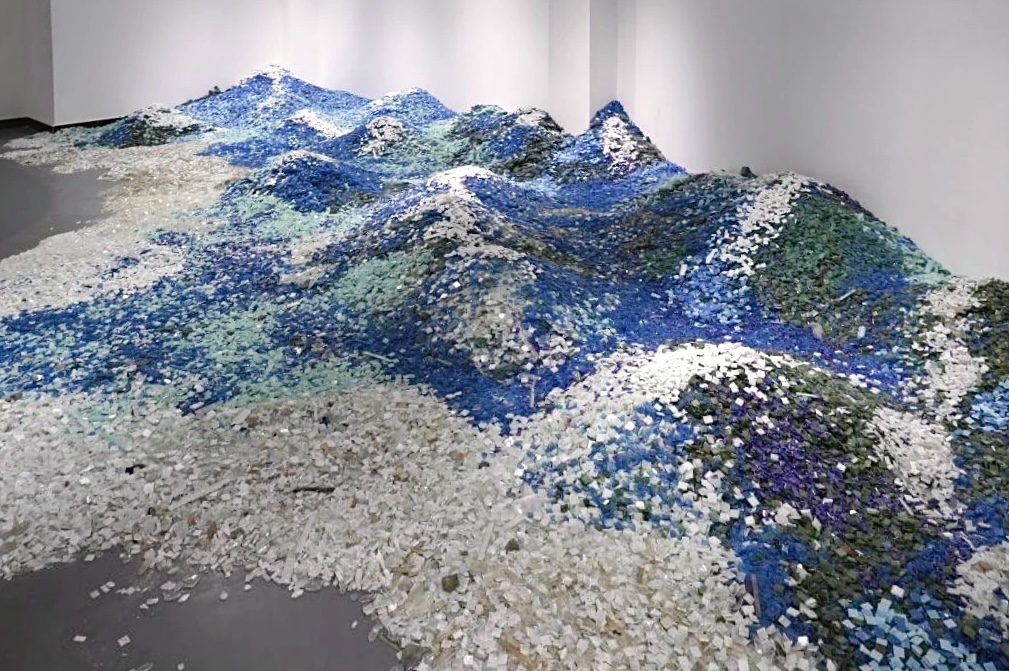
Organizers: The Publicity Department of the CPC Dongguan Municipal Committee, Dongguan Municipal Office of Spiritual Civilization construction
Hosted by: Tang Museum Dongguan
Co-organizer: X Museum Beijing
Curator: You Yang
Curatorial Team: He Yujie, Zhu Yanan, Zhu Yuanling
Project Group: Li Junjie, Lin Xiaochen, Liu Jinshi, Zheng Jun, Ruan Qian, Zhang Xiaoyi
Cooperation and Sponsorship: Magician Space, Xie Xie Design, Bizen Art, Huatong Heavy Duty Packaging
Humans generate value and reimagine life through their hands, aspiring to live poetically within the urban landscape;cities, in turn, are defined by the collective memories and emotional imprints of generations of laborers. Since the reform and opening-up era, Dongguan has emerged as a vital manufacturing hub along China’s southern coast and a prominent new first-tier city. As a resident and astute observer of this dynamic context, Li Jinghu has developed a profound engagement with the materiality and form of art. Over two decades of creative practice, he has navigated and contemplated these elements, intertwining the rhythms of his time and individual destiny to construct his own unique artistic coordinates.
In 2002, at the age of 30, Li resigned from his position as an art teacher and returned to Dongguan from Shenzhen. After returning home, Li established his own creative methodologies and aspirations within his daily work and life, dissipating his previous uncertainties about contemporary art. As a first-hand witness to the expansive narrative of Dongguan’s reform and opening-up, he began to place his personal narrative within the context of social change, reflecting and presenting it in his works. The themes and materials he uses are largely drawn from his direct experiences in Dongguan, approaching the city’s modern development with a knee sensitivity to its continuity and rhythm. He attempts to highlight those moments that have remained in the shadows, yet hold the potential for individual lives to flourish. All the works in this exhibition, “I am Here! Witness of a City and 200 Million People”, originate from this “site”—a space that has been collectively witnessed and co-created by the two hundred million people who have grown alongside this city.
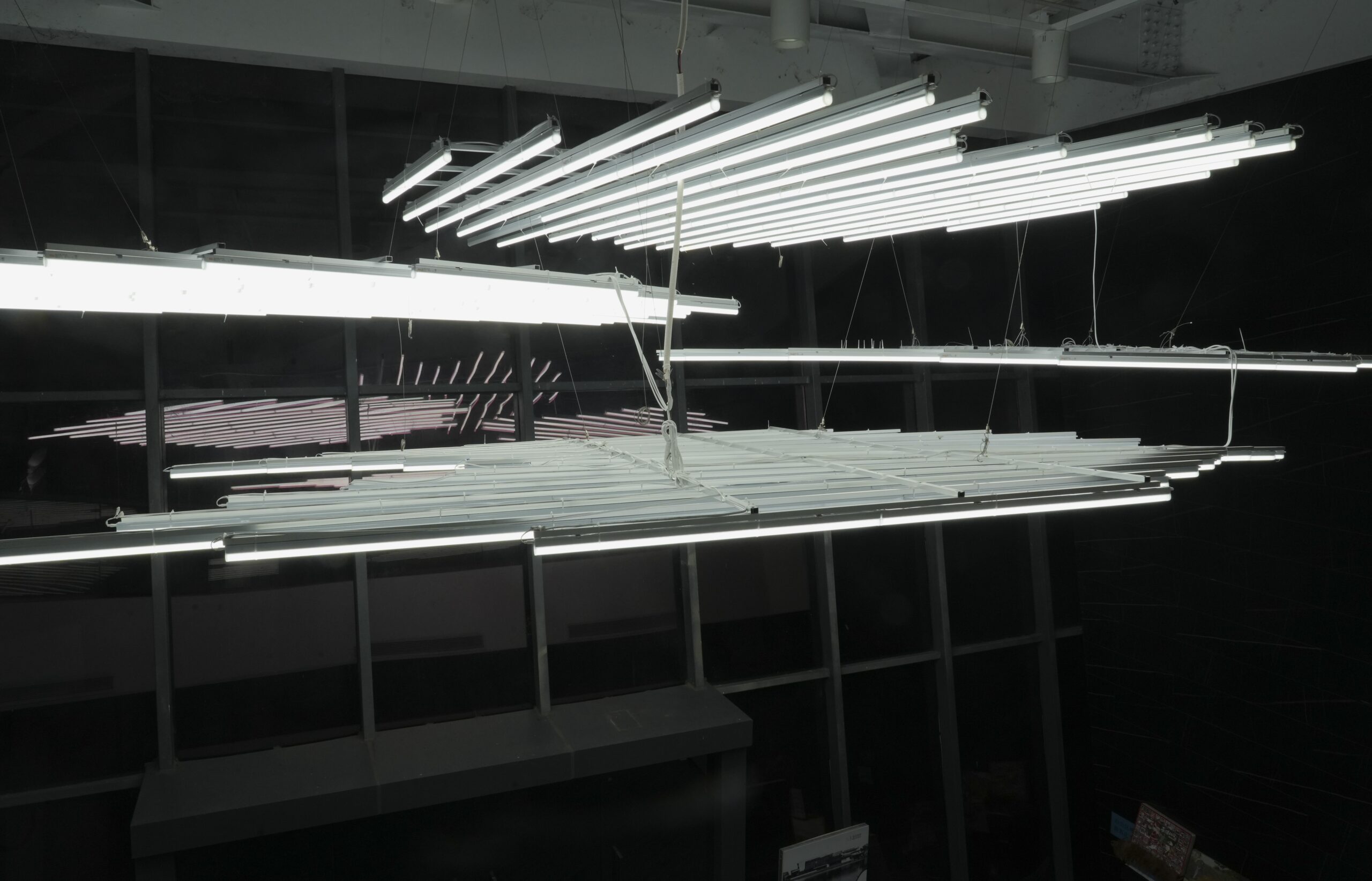


Li Jinghu often names his works after natural landscapes, imbuing everyday materials with new significance through contrast. For example, in White Clouds, he assembles fluorescent light tubes—commonly used in factory ceilings—into the shape of clouds, suspending them in the exhibition space. The lights that once illuminated the bodies of factory workers are transformed into a poetic manifestation of collective experience. The materiality of Li’s work serves as a conduit for connecting with specific production and living contexts. For example, mosaic tiles, closely associated with the industrial history of the South, were widely used on the exterior walls of factories, dormitories, and rental houses built in the 1990s, thus carrying symbolic weight tied to that era. Similarly, the stainless-steel tableware in The Sun rises as usual every day evokes memories of communal dining halls. On the other hand, some of the materials possess a commensurable quality. Through repetitive arrangements, these man-made objects ultimately evolve into the accumulation of emotions, revealing themselves as more than mere materials. They embody the warmth of the maker’s hands and the gaze of the user, pointing toward the sun, mountains, and stars, transforming into a landscape that can be freely appreciated.
The repetition and variation in the materials he uses in works resonate with the rhythm of individual daily life, and create an intertextual dialogue with the city’s ongoing renewal. The viewer’s gaze and body, existing alongside the artwork, are embedded in the “actual” moment—much like in Waterfall, where multiple phone screens are connected to convey water cascading from different faucet spouts. This temporary “actual” moment or “punctum” differentiates art from pure repetition, while also connecting it to the relentless flow of the real world. These works, rooted in authentic scenes from Dongguan’s urban development, carry the weight of memory and lived experience, symbolizing the presence of humanity. In the exhibition, the viewers’ gazes also illuminate the moments captured in the works, creating an empathetic resonance between the individual and the works.

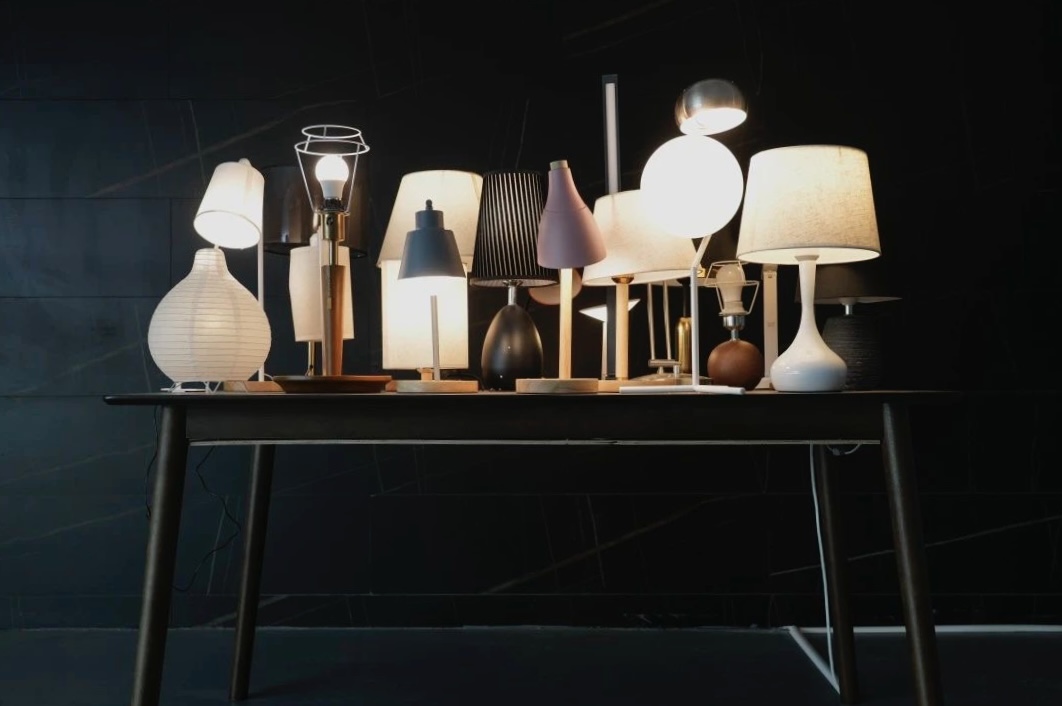

The exhibition reflects the shared sentiment of the two hundred million people in Dongguan—a collective yearning for beauty and progress. Driven by this desire, people migrate, and in the process, their individual identities are continuously reconstructed. In Li’s work Companion, pairs of porcelain tiles lean against each other in a human-like manner, as though offering mutual comfort. The transformations occurring in Dongguan affect countless individuals, shaping their new identities and life paths. Amidst this rapid change, people from all parts of the country, much like the elements in the artist’s works, are in a constant process of self-adjustment, renewal, and reconfiguration. Some choose to leave, while others remain to establish families. Their traces are woven into the city’s fabric, contributing to the “new growth” of Dongguan.
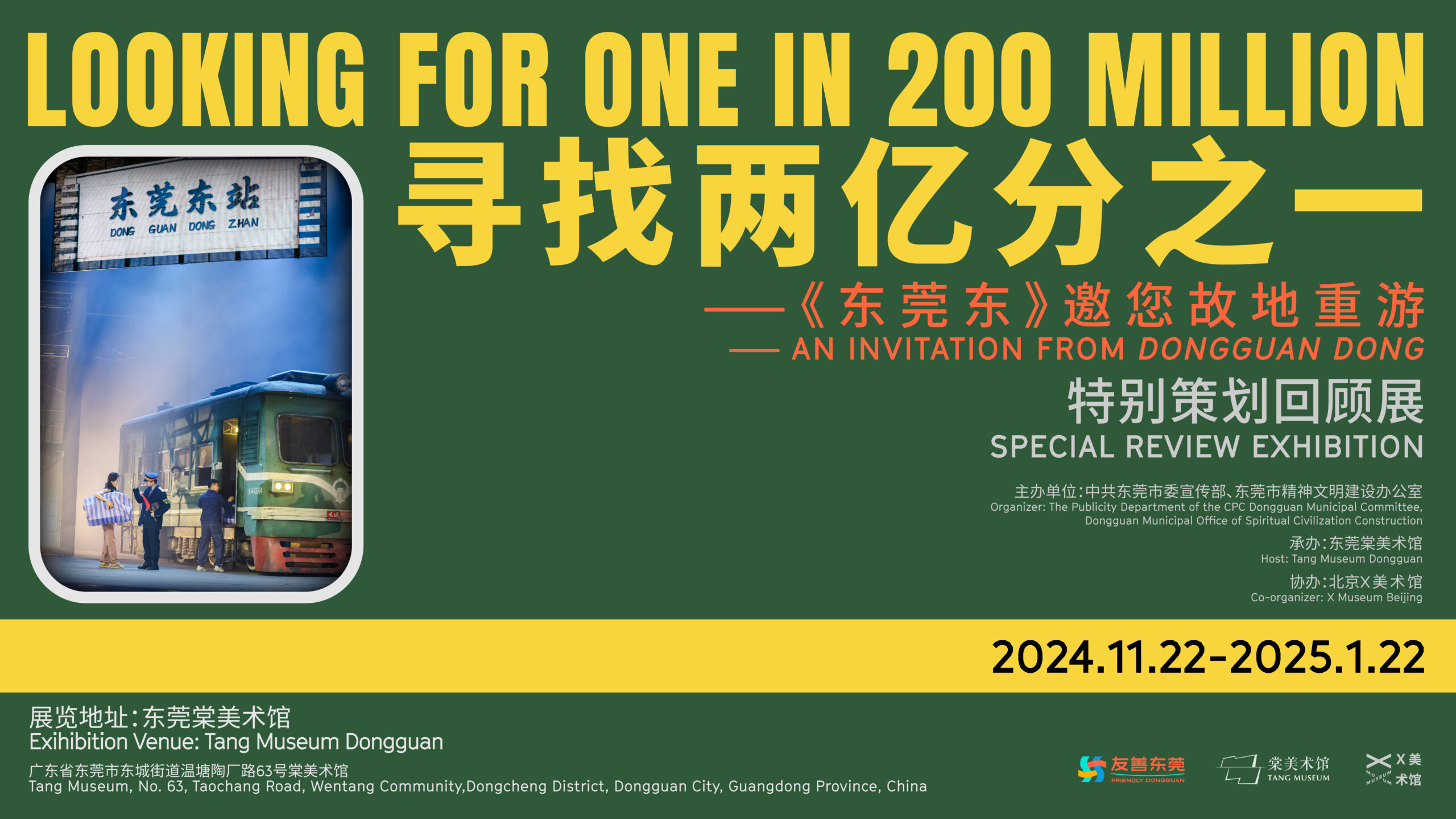
The exhibition aims to review Li Jinghu’s recent works while also providing a nuanced commentary on the transformation of Dongguan. The objects and imagery within the artworks reflect the city’s flourishing manufacturing industry, symbolizing the shift of its residents from an idyllic rural past to the world of factories and high-rise buildings. In addition to the artworks, a special retrospective, titled “ ‘Looking for one in 200 Million—An Invitation fromDongguan Dong’ Retrospective Exhibition”, presents a curated collection of images, videos, and publications that trace the lives of the two hundred million individuals who have lived, worked, and settled down in Dongguan over the past four decades. Together, the exhibition tells the profound story of a city and its inhabitants, whose fates are intertwined in a shared journey toward success. This narrative unfolds as a testament to the emergence of a new industrial civilization, one that weaves together the themes of “man, production, city, and culture”, shaped by the monumental forces of China’s reform and opening-up.
About The Artists
About The Curators















